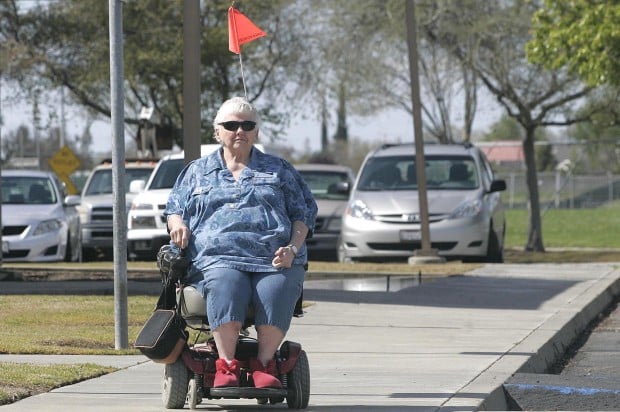Choose Where To Cross Carefully
Whenever possible, opt for intersections with traffic lights and pedestrian signals. These controlled crossings provide a structured environment for crossing safely. Traffic lights offer clear indications for when it's safe to cross, reducing the risk of accidents. If traffic lights are not available, use a painted crossing, like the one shown in the photo above.
Wait for All Vehicles to Stop Moving
Exercise patience and wait until all vehicles have come to a complete stop before venturing onto the street. Be cautious of drivers who might not immediately notice you or those who are distracted, texting, etc.
Establish Eye Contact with Drivers
Before crossing, make eye contact with drivers whenever possible. This simple gesture helps ensure that drivers acknowledge your presence and intent to cross. If a driver makes eye contact with you, they are more likely to yield the right-of-way.
Beware of Large Vehicles
Large vehicles like trucks and SUVs can pose greater risks due to limited visibility. Take extra precautions when crossing in front of or behind such vehicles. Ensure that the driver has seen you and has ample time to stop before proceeding.
Enhance Visibility
Being as visible as possible is crucial for your safety. Here are some tips to enhance your visibility:
* Wheelchair Reflectors: Consider attaching safety reflectors to your wheelchair. Products like RehaDesign's "Wheels on Fire" offer high visibility, particularly in low-light conditions. These reflective accessories make you more noticeable to drivers. Or choose a backpack with reflective designs such as RehaDesign's Stash and Flash Wheelchair Backpack, or their Gel-Palm Wheelchair gloves.
* Bright Colored Clothing: Opt for bright and contrasting colors when dressing, especially during low-light conditions. These colors make you stand out against your surroundings, improving your visibility to drivers.
* Wheelchair Lights: Products like RehaDesign's "wUnderGlow" offer wheelchair users the option to add LED lighting to their chairs. These lights not only enhance visibility but also add a unique touch to your wheelchair.
* Wave a Flag: Consider adding a flag to your wheelchair, similar to bicycle trailers. The flapping flag can catch the attention of drivers, making them more aware of your presence.
By following these tips and enhancing your visibility through the use of safety reflectors, bright clothing, wheelchair lights, and flags, you can significantly reduce the risks associated with street crossings. Remember to prioritize intersections with traffic lights, wait for all vehicles to stop moving, and establish eye contact with drivers to ensure a safe journey across the street.


Comments
Post a Comment